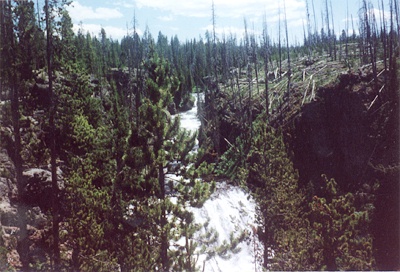All Nonfiction
- Bullying
- Books
- Academic
- Author Interviews
- Celebrity interviews
- College Articles
- College Essays
- Educator of the Year
- Heroes
- Interviews
- Memoir
- Personal Experience
- Sports
- Travel & Culture
All Opinions
- Bullying
- Current Events / Politics
- Discrimination
- Drugs / Alcohol / Smoking
- Entertainment / Celebrities
- Environment
- Love / Relationships
- Movies / Music / TV
- Pop Culture / Trends
- School / College
- Social Issues / Civics
- Spirituality / Religion
- Sports / Hobbies
All Hot Topics
- Bullying
- Community Service
- Environment
- Health
- Letters to the Editor
- Pride & Prejudice
- What Matters
- Back
Summer Guide
- Program Links
- Program Reviews
- Back
College Guide
- College Links
- College Reviews
- College Essays
- College Articles
- Back
The History of the Crossbow
Crossbows were invented as an improvement on short and long bows in warfare. This made the average archer more accurate and so that they didn’t have any weaknesses in the military archers. With short and long bows, it would vary how strong the shot would be, the crossbow eliminated differences in strength. The crossbow was used in the 4th century BC by the Chinese and is still used today in military and hunting throughout the world .
The history of the crossbow started in the 4th century China BC. They were first invented by the military to keep control over their citizens using fear tactics by having a superior weapon and then in the military as defense weaponry. They were not allowed to leave the country so that their foes could not replicate it and use it against them. Somewhere from 400 BC - 0, the Greeks did get their hands on the crossbow and invented the gastraphetes, The gastraphetes archer uses two hands to pull back the string, thereby increasing the amount of power it could hold, and late 2nd century BC, they invented the ballista. Which is a larger counterpart to the crossbow in which it is essentially a giant crossbow on wheels that shoots sharpened logs. About the 11th century, the Chinese invented rapid-firing crossbows that could fire 20 arrows in 15 seconds (essentially being the precursor to the machine gun).
Chinese Repeating Crossbow
Gastraphetes
Ballista
A crossbow is basically a bow. A bow is basically a spring. When you press or pull on a spring and then let go, it returns to its original shape. This is because of the spring’s elastic potential energy (the energy it stores because of a change in shape). When you pull one end of a spring it stores elastic potential energy until you let go. Its potential energy then becomes kinetic energy (the energy of movement), which allows the spring to go back to its original shape.
When you draw a bow string toward you, you also pull the tips of the bow’s limbs toward you and closer together. You are changing the bows shape. So when you let go and shoot the arrow, the bow strong moves back to its original shape. The movement and energy shoot the arrow from the bow. The physics concepts that apply to bows apply to crossbows as well.
There are two things that tell how much energy a bow can hold.
Draw weight. The amount of force required to draw the bow.This increases the farther back you pull the string.
Draw length. The distance between the bow string’s position at rest and when drawn.
The total amount of energy that a bow can hold is equal to it’s draw weight times its draw length divided by two. (How far you can pull back the string). The more work you have to do to draw a bow, the more energy it can transfer to an arrow.
The bow’s energy is measured in foot-pounds or joules. The arrow’s velocity (the speed of something in a given direction) is measured in feet or meters per second.
There are things that can affect a bow’s draw weight and length, which change the velocity at which the arrow will travel:
Size: longbows are more powerful than short bows
Shape: because it is shaped like a curve, it wants to bounce back
Composition (what it’s made of) and density (how closely the molecules are packed together)
Tensile strength (tension) creates how much energy it can hold and return to its original shape after being shot
The larger the crossbow the more powerful it is is. A handheld crossbow that is about the size of a rifle is weaker than a ballista (a siege machine that is as big as a car). The bigger the projectile, the longer the arms of the bow have to to be to compensate for the bigger and heavier projectile. A small regular size crossbow shoots a small bolt that is a little heavier than a regular arrow. Ancient Greek ballistas could shoot a log that weight 200 to 300 lbs that was sharpened on the front of it.
Larger crossbows that a person aims from the shoulder are more powerful than smaller, handheld crossbows.
When you are aiming a bow your arms will get tired. With the crossbow, the trigger is keeping the string back so you don’t have to constantly pull it back yourself. It doesn’t wear down on your arm. The only time it wears on your arm is when you’re cocking the string.
The military still uses crossbows today because it’s quiet, simple to operate, reusable, and lighter than rifles. It is used to detonate trip wires, landmines, and booby traps. The military uses a line to set off the devices. It is currently being used in Brazil, Cambodia, Bosnia, and Serbia. In China, the police use crossbows as it can penetrate armor, and they can safely subdue someone who has explosives strapped on them as it would not detonate the packs. India puts them with cyanide tips on the bolts (an arrow-like metal projectile). Advancements on the crossbow include cyanide tips on the bolts, a cam rotary which minimizes string pull and maximizes ejection force, laser sites, a parallax scope (tells the distance to the target), and tracer bolts to see how well they can hit their targets.

Similar Articles
JOIN THE DISCUSSION
This article has 0 comments.
